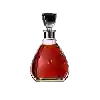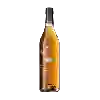
Winery Pierre GaillardLa Roche d'Hérode Banyuls Traditionnel
This wine generally goes well with beef, lamb or mature and hard cheese.
Food and wine pairings with La Roche d'Hérode Banyuls Traditionnel
Pairings that work perfectly with La Roche d'Hérode Banyuls Traditionnel
Original food and wine pairings with La Roche d'Hérode Banyuls Traditionnel
The La Roche d'Hérode Banyuls Traditionnel of Winery Pierre Gaillard matches generally quite well with dishes of beef, lamb or spicy food such as recipes of boeuf en daube, tomatoes, zucchini, potatoes stuffed moroccan style with... or pork gyros.
Details and technical informations about Winery Pierre Gaillard's La Roche d'Hérode Banyuls Traditionnel.
Discover the grape variety: Bouquettraube
The white Bouquettraube is a grape variety originating from Germany. It produces a variety of grape specially used for the elaboration of wine. It is rare to find this grape to eat on our tables. This variety of grape is characterized by large bunches and large grapes. The white Bouquettraube can be found cultivated in these vineyards: South-West, Cognac, Bordeaux, Provence & Corsica, Rhone Valley.
Informations about the Winery Pierre Gaillard
The Winery Pierre Gaillard is one of of the world's great estates. It offers 52 wines for sale in the of Banyuls to come and discover on site or to buy online.
The wine region of Banyuls
Banyuls wines come from the South-eastern Part of Roussillon, in the south of France, in the lower Pyrenees, a few kilometres from the Spanish border. These naturally Sweet wines are consumed both as an aperitif and as a dessert. They come in a wide range of hues, from GoldenGreen (Banyuls Blanc) to Amber (Banyuls Ambré) to the intense garnet of the standard Banyuls Rouge. Unusually among the natural sweet wines of France, all Banyuls wines are made primarily from Grenache grapes of various colors.
The wine region of Languedoc-Roussillon
Languedoc (formerly Coteaux du Languedoc) is a key appellation used in the Languedoc-Roussillon wine region of southern France. It covers Dry table wines of all three colors (red, white and rosé) from the entire region, but leaves Sweet and Sparkling wines to other more specialized appellations. About 75% of all Languedoc wines are red, with the remaining 25% split roughly down the middle between whites and rosés. The appellation covers most of the Languedoc region and almost a third of all the vineyards in France.
The word of the wine: Draft liquor (champagne)
After blending, the wine is bottled with a liqueur de tirage (a mixture of sugar and wine) and a yeast (selected yeasts). The yeast attacks the sugar and creates carbon dioxide. The fermentation, which lasts about two months, is prolonged by an ageing period (15 months minimum in total). The bottle is capped (some rare vintages are capped with a staple and a cork).














